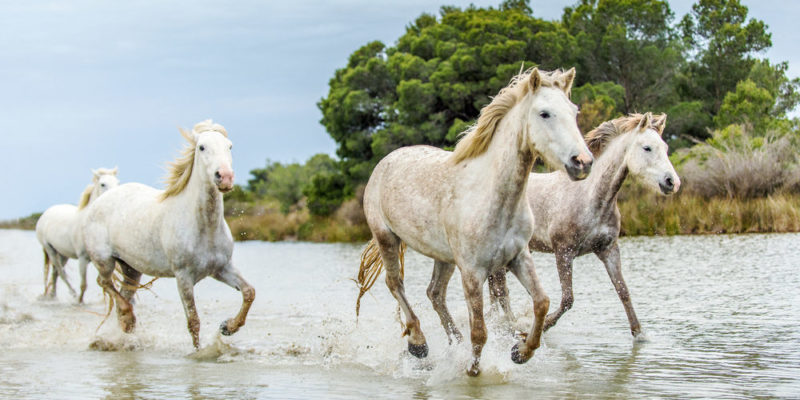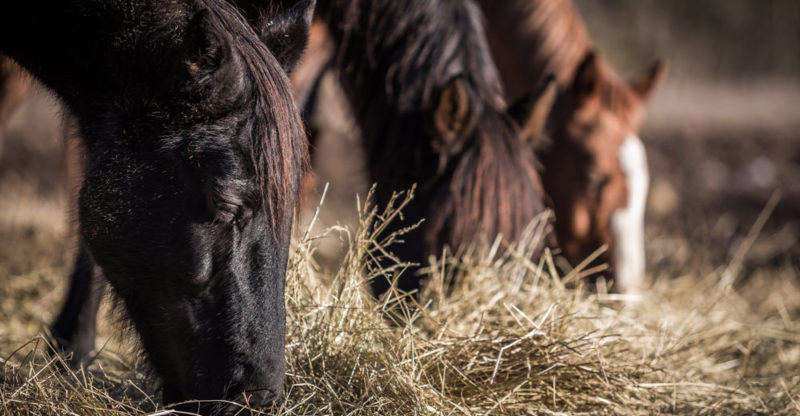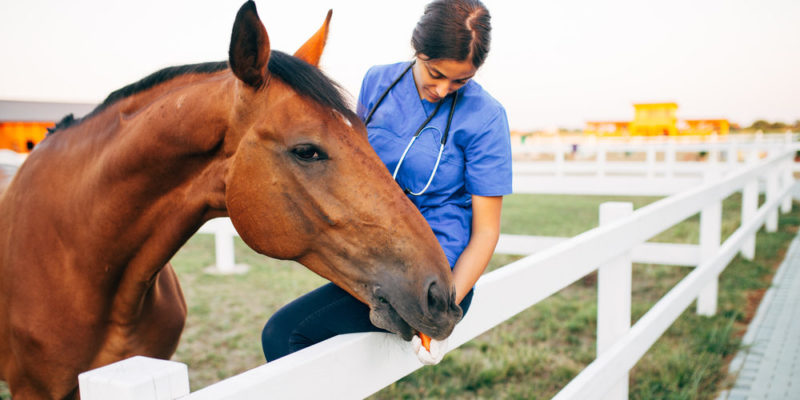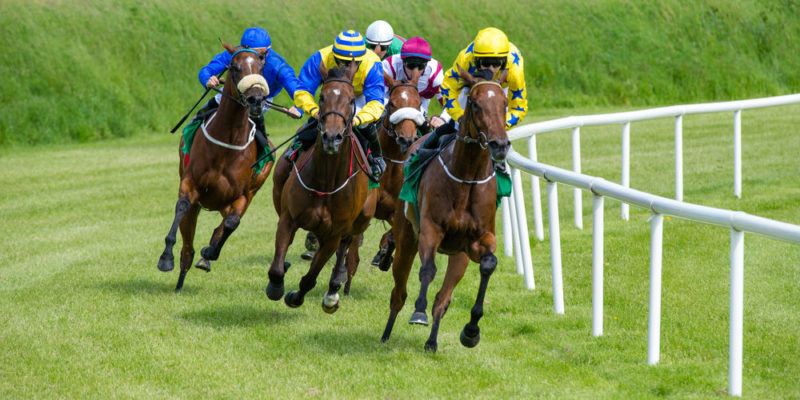We explain what a horse is and what are the characteristics of this animal. In addition, how it feeds, its care, reproduction and more.
What is a horse?
The horse is a mammal belonging to the equidae family . There are 86 different races in the world. Three groups of wild mammals are included in the horse family: the first group includes the zebras (native to Africa ); in the second we find the asses (within them the African wild ass, the kiang and the onager that live in Asia ) and, finally, the horses themselves, with the scientific name “Equus ferus caballus”.
Horses can be domesticated , those that man managed to tame for different purposes are very useful in livestock or sport , as well as in psychological and physical rehabilitation therapies ( equine therapy ) and for transport in certain rural contexts. At the same time, we find horses that live in a wild state.
Among the types of wild horses we mainly find the tarpan and Przewalski's horse . The first is native to a region located between Eastern Europe and Mongolia, and became extinct in the early 19th century. Meanwhile, Przewalski's horse is the only wild species that we can find today.
The females are called mares , while the male calf is called a foal and the female calf filly.
Physical characteristics of the horse

Horses are animals that physically have a great bearing. Its neck is characterized by being long , including bristles of considerable length and an extremely elongated head with two erect ears. The tail also stands out for its length.
The height of a horse is measured from the withers to the ground and will vary in correlation to the breed; some reach heights of 185 centimeters . Also the weight will depend on the breed or variety, mostly ranging between 390 and 1,000 kilograms.
Horse feeding
They are herbivores and feed on a wide variety of herbs and grasses . Horses need adequate nutrition to avoid health problems, prevailing pathologies such as anemia or obesity, among others.
Horse life expectancy

The life span of wild horses extends to about 25 years , while domestic ones can live for about 40 years. It should be remembered that these mammals have not reached adulthood until they are 4 years old, it is only after that time that they are prepared to be tamed and ridden.
Horse habitat
Wild horses, rare due to hunting and constant human pursuit, are found in deserts , savannas, and grasslands of Asia and Africa. Domesticated breeds can be found in all parts of the globe.
Reproduction of horses

Gestation takes place over 11 months , and only on exceptional occasions is the birth of more than one calf. At around 4 years of age, horses reach sexual maturity.
Domestic horses have problems in sexual coupling , sometimes it is necessary for matadors to direct the horse's member to fertilize the female.
Sports use of the horse
At present, horses are used for different sports activities thanks to their special conditions, including jumping, horse riding, polo, dressage, charrería, duck , cowboy dressage and other varieties.
Horse care

The horse needs a space in which it feels comfortable, vaccination periodically and internal and external deworming . It also requires dental care: a veterinarian needs to file the odontophytes that commonly form every six months. In addition, the vet should perform a general check-up at least twice a year.
Horse character
The horse communicates with the other members of the herd, conveying its emotions . They also establish a hierarchy of domination without violence . They are not aggressive and choose to flee before fighting.
Types of horse temperament
Horses are divided into:
- Cold-blooded horses. They are the quietest.
- Warm-blooded horses. Cold-blooded and warm-blooded horses crossing.
- Warm-blooded horses. Called purebred horses: they are of great temperament and very nervous.
Horse displacement

Horses stand out for their speed, ductility and elegance of movement , which is why some are used in show jumping competitions, races and exhibitions.
These animals have three ways of moving: walk, trot (they can reach speeds of 15 kilometers per hour) and gallop (they reach 65 kilometers per hour).
The above content published at Collaborative Research Group is for informational and educational purposes only and has been developed by referring reliable sources and recommendations from technology experts. We do not have any contact with official entities nor do we intend to replace the information that they emit.
Cultural journalist with great interest in education and technological innovation in the classroom. The future passes through technology and it is already here. .
Leave a reply
Your email address will not be published. Required fields are marked *Recent post

Sport: What Is It, Types, Risks, Features, Characteristics and Examples

Dogs: Emergence, Features, Characteristics, Feeding and Breeds

Story: Definition, Elements, Structure, Features and Characteristics

